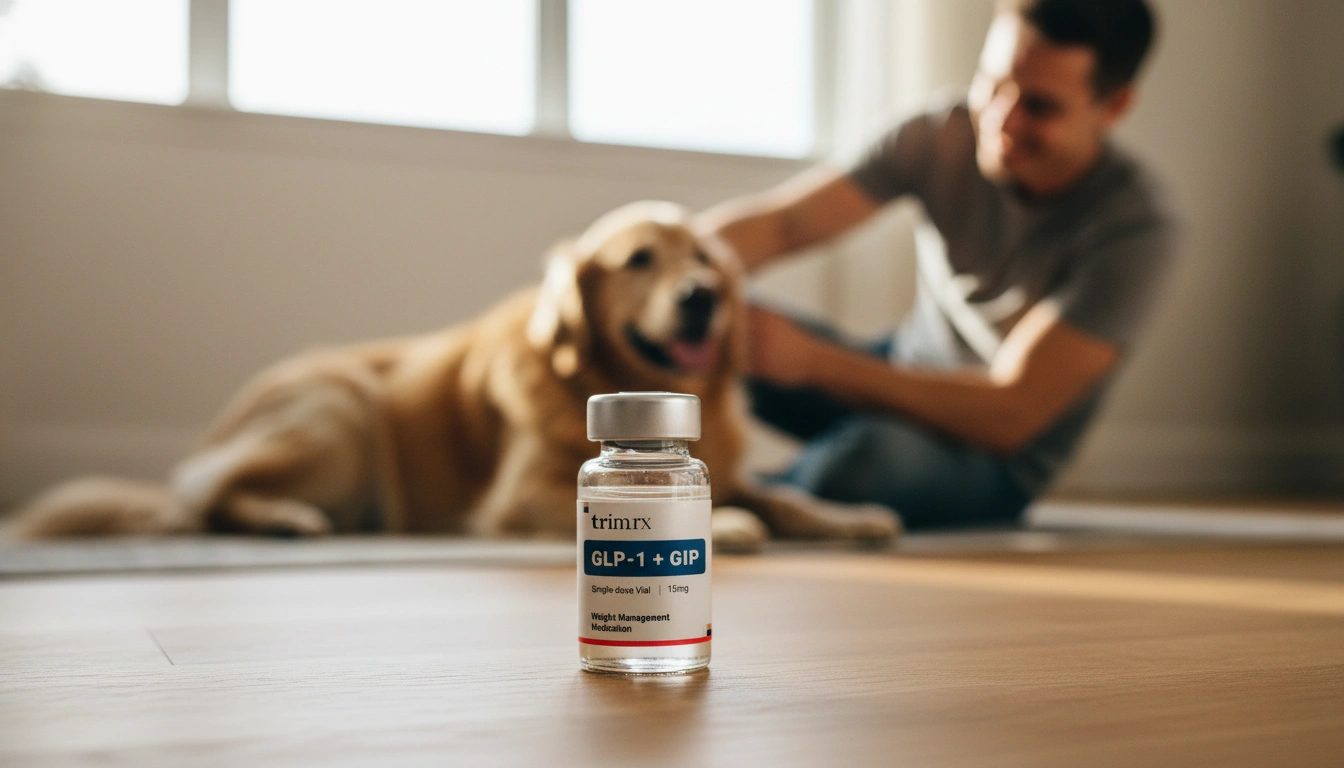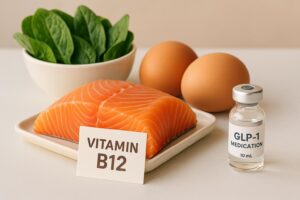What Naturally Increases GLP-1: A Comprehensive Guide to Boosting This Important Hormone

Introduction
Did you know that a simple change in your diet could have a profound impact on your body’s ability to regulate blood sugar and appetite? Enter glucagon-like peptide-1 (GLP-1), a hormone produced in the gut that plays a crucial role in our metabolic health. Over the last few years, GLP-1 has gained significant attention, particularly in the context of weight management and diabetes treatment. With the rise of prescription medications that mimic GLP-1, many are left wondering: what naturally increases GLP-1, and how can we leverage this knowledge for better health?
As we explore this topic, we will delve into the science behind GLP-1, its functions in the body, and the various ways we can naturally enhance its levels through dietary choices and lifestyle modifications. By the end of this blog post, you will have a clear understanding of how to effectively support your GLP-1 production, leading to improved appetite control and metabolic health.
Our discussion will cover several key areas: the role of GLP-1 in appetite regulation, the types of foods that can enhance its secretion, and the importance of a healthy gut microbiome in this process. We will also touch on the relationship between GLP-1 and physical activity, as well as other natural supplements that may assist in boosting this vital hormone. Throughout this journey, we’ll highlight how TrimRx’s personalized weight loss solutions can help you embrace a healthier lifestyle through science and empathy.
So, are you ready to learn how to increase your GLP-1 levels naturally? Let’s embark on this enlightening exploration together!
What is GLP-1 and Why is It Important?
GLP-1 is a hormone secreted by the L-cells in the intestine in response to food intake. It plays several critical roles in our body, primarily:
- Stimulating Insulin Secretion: GLP-1 enhances the secretion of insulin from the pancreas, which helps lower blood sugar levels after eating.
- Inhibiting Glucagon Release: It reduces the secretion of glucagon, a hormone that increases blood sugar levels, thereby maintaining better glucose control.
- Slowing Gastric Emptying: GLP-1 slows the movement of food through the digestive system, leading to a more gradual absorption of nutrients and a feeling of fullness.
- Reducing Appetite: By signaling the brain that we are full, GLP-1 helps control our hunger and food intake.
Given its significant role in managing blood sugar levels and appetite, it’s no wonder that GLP-1 has become a focal point in discussions about weight management and diabetes treatment. With the increasing prevalence of obesity and type 2 diabetes, understanding how to naturally increase GLP-1 is more relevant than ever.
The Connection Between GLP-1 and Weight Management
Recent studies have shown that higher levels of GLP-1 are associated with reduced appetite and lower body weight, making it an attractive target for weight management strategies. Prescription GLP-1 receptor agonists like semaglutide (Ozempic) and tirzepatide (Mounjaro) have demonstrated impressive results in clinical trials, helping individuals achieve significant weight loss and better blood sugar control.
However, not everyone is seeking medication; many individuals are interested in natural methods to enhance their GLP-1 levels. This is where dietary choices and lifestyle modifications come into play, which we will explore in detail.
Foods That Naturally Increase GLP-1 Levels
1. High-Fiber Foods
One of the most effective ways to boost GLP-1 levels is by incorporating high-fiber foods into our diet. Fiber-rich foods can slow digestion and promote the release of GLP-1. Here are some fiber-rich options to consider:
- Whole Grains: Foods like oats, barley, and brown rice contain soluble fiber that can stimulate GLP-1 secretion. Soluble fiber slows digestion and increases satiety.
- Legumes: Beans, lentils, and chickpeas are excellent sources of both fiber and protein, which can enhance GLP-1 levels.
- Fruits and Vegetables: Incorporating a variety of fruits and vegetables into your meals not only provides essential vitamins and minerals but also adds fiber to your diet, which aids in GLP-1 production.
2. Protein-Rich Foods
Consuming adequate protein can also stimulate GLP-1 release. Foods high in protein include:
- Lean Meats: Chicken, turkey, and fish are excellent sources of protein that can help regulate appetite and enhance GLP-1 levels.
- Eggs: Eggs are a great source of protein and healthy fats, both of which have been shown to increase GLP-1 secretion.
- Dairy Products: Low-fat dairy products like yogurt and cottage cheese provide protein and calcium, contributing to GLP-1 production.
3. Healthy Fats
Incorporating healthy fats into your diet can also promote GLP-1 release. Some healthy fat sources include:
- Avocados: Rich in monounsaturated fats and fiber, avocados can help increase GLP-1 levels while providing a satisfying, creamy texture to meals.
- Nuts and Seeds: Almonds, walnuts, and chia seeds provide both healthy fats and fiber, making them an excellent choice for boosting GLP-1.
- Olive Oil: Using olive oil as a dressing or cooking oil can provide healthy fats that support GLP-1 secretion.
4. Fermentable Fibers
Certain types of fiber are particularly effective at increasing GLP-1 levels due to their ability to be fermented by gut bacteria. These include:
- Beta-Glucan: Found in oats and barley, this soluble fiber has been shown to enhance GLP-1 secretion significantly.
- Inulin: A type of soluble fiber found in foods like garlic, onions, and asparagus, inulin can promote gut health and increase GLP-1 levels.
5. Foods Rich in Tryptophan
Tryptophan is an amino acid that can be converted into serotonin, which may also influence GLP-1 levels. Foods high in tryptophan include:
- Turkey and Chicken: These meats contain high levels of tryptophan, contributing to increased GLP-1 production.
- Pumpkin Seeds: A great plant-based source of tryptophan, pumpkin seeds can support GLP-1 levels while adding crunch to salads and snacks.
The Role of Gut Health in GLP-1 Production
The Gut Microbiome and GLP-1
The gut microbiome, which consists of trillions of microorganisms living in our intestines, plays a crucial role in the production of GLP-1. Recent research has shown that a diverse and healthy gut microbiome can enhance GLP-1 secretion through several mechanisms:
- Short-Chain Fatty Acids (SCFAs): When fiber is fermented by gut bacteria, it produces SCFAs, which can stimulate GLP-1 release. Including prebiotic and high-fiber foods in our diet promotes a healthy gut microbiome.
- Indoles: Certain gut bacteria convert tryptophan into indole, which can enhance GLP-1 production. This highlights the importance of consuming a diet rich in diverse nutrients to support gut health.
Supporting Gut Health
To maintain a healthy gut microbiome and promote GLP-1 production, consider the following strategies:
- Probiotics: Incorporating probiotic-rich foods such as yogurt, kefir, sauerkraut, and kimchi can help introduce beneficial bacteria to the gut.
- Prebiotics: Foods high in prebiotic fibers, such as garlic, onions, and bananas, can feed the good bacteria in your gut and support SCFA production.
- Hydration: Staying well-hydrated is crucial for maintaining gut health. Drinking plenty of water can support digestion and overall gut function.
The Impact of Physical Activity on GLP-1 Levels
Exercise and GLP-1
Physical activity has been shown to positively influence GLP-1 levels. Regular exercise can enhance insulin sensitivity and promote the secretion of GLP-1, supporting weight management and metabolic health. Research indicates that both aerobic and resistance training can lead to increased GLP-1 levels, making exercise a vital component of a healthy lifestyle.
Recommended Exercise Guidelines
For optimal health benefits, aim for:
- 150 Minutes of Moderate-Intensity Exercise: This could include brisk walking, cycling, or swimming.
- Two Days of Resistance Training: Incorporating strength training exercises can enhance muscle mass and metabolic rate, further supporting GLP-1 production.
Natural Supplements that May Support GLP-1 Levels
While dietary changes and physical activity are the primary methods for enhancing GLP-1 levels, certain natural supplements may offer additional support:
- Berberine: This compound found in various plants has been shown to impact glucose metabolism and may support GLP-1 secretion.
- Cinnamon: Some studies suggest that cinnamon may have a beneficial effect on GLP-1 levels and overall blood sugar control.
- Curcumin: The active compound in turmeric, curcumin has been linked to improved insulin sensitivity and may support GLP-1 production.
Before considering any supplements, it’s important to consult with a healthcare professional to ensure they align with your individual health goals and needs.
Conclusion
GLP-1 plays a vital role in our body’s ability to regulate blood sugar and appetite, making it an essential factor in weight management and metabolic health. By understanding what naturally increases GLP-1, we can take proactive steps toward enhancing our overall well-being.
Incorporating high-fiber foods, protein-rich options, healthy fats, and supporting gut health through prebiotics and probiotics can significantly boost GLP-1 levels. Coupled with regular physical activity and consideration of natural supplements, these strategies can create a supportive environment for GLP-1 production.
At TrimRx, we are dedicated to helping you achieve your weight loss goals through personalized, medically supervised care. Our commitment to safe and effective solutions, combined with your proactive approach to health, can pave the way for a healthier lifestyle. Together, we can explore our personalized weight loss programs, starting with our free assessment quiz to determine your eligibility for prescription weight loss medications.
FAQ
What is GLP-1, and why is it important?
GLP-1 is a hormone produced in the gut that plays a crucial role in regulating blood sugar levels and appetite. It stimulates insulin secretion, inhibits glucagon release, slows gastric emptying, and reduces hunger.
How can I naturally increase GLP-1 levels?
You can enhance GLP-1 levels by consuming high-fiber foods, protein-rich options, healthy fats, and maintaining a healthy gut microbiome through prebiotics and probiotics.
What types of foods are best for boosting GLP-1?
Foods high in fiber (like whole grains, fruits, and vegetables), protein (such as lean meats and eggs), and healthy fats (like avocados and nuts) are excellent choices for boosting GLP-1 levels.
Does exercise impact GLP-1 levels?
Yes, regular physical activity can enhance GLP-1 secretion and improve insulin sensitivity, contributing to better weight management and metabolic health.
Are there any supplements that can help with GLP-1 production?
Certain natural supplements like berberine, cinnamon, and curcumin may support GLP-1 levels, but it’s essential to consult with a healthcare professional before starting any new supplements.
As we continue to learn about the impact of GLP-1 on our health, we hope this guide empowers you to make informed decisions that support your well-being and weight management journey.

Transforming Lives, One Step at a Time
Keep reading
Vitamin B12 and GLP-1 Medications: What to Know
GLP-1 medications can lower B12 absorption and intake; learn symptoms, food sources, supplement options, and how to monitor levels.
Semaglutide Injection Site Reactions: What To Know
Learn why semaglutide injections can cause redness, swelling or nodules, how to prevent and treat them, and when to seek medical care.
TrimRx vs Friday’s
Compare TrimRx and Friday’s telehealth GLP-1 weight-loss programs: pricing, medical support, coaching, delivery, and which fits your needs.



